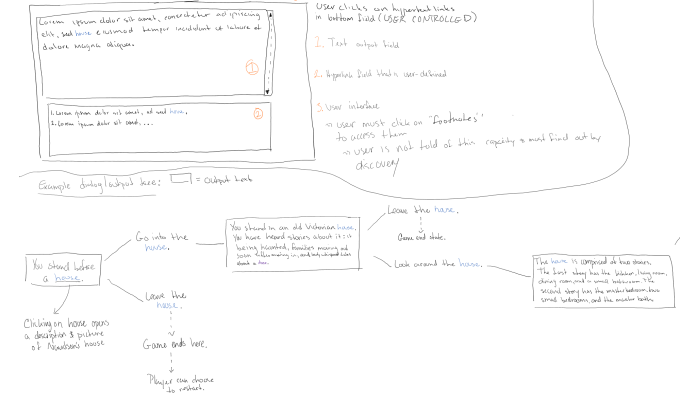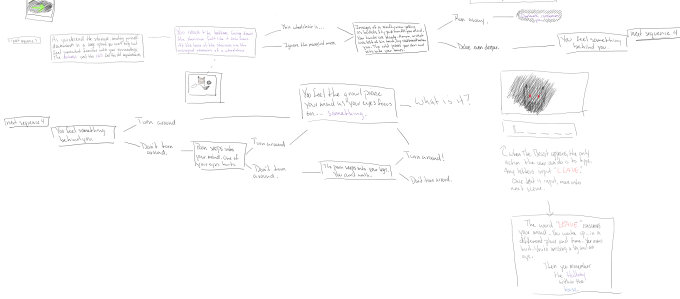Games are made of a multitude of facets. Aspects like graphical presentation, sound design, narrative structure, and game play mechanics – among other facets – all contribute to the quality and nuance of a video game. Video games require, for the most part, direct interaction to gain satisfaction. While all of the facets stated previously are important, several rise to the top for being the preeminent components for game design: Graphical presentation, game play mechanics, and narrative structure. Components like sound design, user interface, and control schemata help the delivery of the main game design components.
The following reviews will focus on graphical representation and game play mechanics. With video games being a visual, interactive medium, the direct presentation of both graphics and controls are paramount. The player cannot enjoy a game if the mechanics aren’t fluid or intuitive enough. The graphical representation is what the mechanics of the game are presented through and if the graphics – be it through graphical fidelity, design, or complexity – are not quality then the game will suffer as a whole. The following games will be ranked from 1 to 9, 1 being highest and 9 being lowest.
Starting at number 9 it will be TinyKeep. TinyKeep’s design is simple in control and input as well as graphical presentation. The interesting choice of keeping most of the game unexplained until the player discovers it apart from minute tutorial splash screens. The graphics are extremely simplistic and presented in a top-down isometric perspective. The controls are muddy and the camera control is terrible at its best. The graphics, while simplistic, look muddy and inefficient. The murkiness of controls along with the muddy graphics detract from the game, even when watching it. The poor camera did not help TinyKeep at all.
Next is Metal Gear Solid at number 8. The graphics, with the game being from 1998, are muddled at best. Polygonal design and pixelated graphics work against the actual graphical design. The presentation is serviceable but the true difficulty in gameplay is the control scheme. Controlling Solid Snake is cumbersome. The player cannot aim and move at the same time. In addition, the interactivity between the player and the environment is hit-or-miss. Interacting with elevators takes running at the wall and pressing the USE button. The control scheme did not age well while the graphics have their own unique charm.
Limbo is next at number 7. The gameplay is extremely simplistic. The player controls a little boy who has to traverse obstacles, complete basic physics puzzles, and get paste gigantic spiders. The controls are straightforward. Some of the physics-based puzzles can be confusing and frustrating but there is not much to complain about with Limbo. The aesthetic and graphical presentation is charming and ominous. Some scenes look murky with post-processing fog and bloom and the monochrome color scheme can interfere with the visual crispness of the two dimensional graphics.
Number 6 is Child of Light. Gameplay is a mix between two dimensional platforming and role-playing-game combat systems. World traversal is a little float-y and not precise. Combat is visually simple with a focus on attack timing and delaying enemy actions with a “wisp”, which is an interesting mechanic. The graphical presentation is very story-book, with watercolor splashes and bright colors dominating the screen. The graphical design, while not technically impressive, is visually pleasing.
Team Fortress 2 is next up at number 5. The graphical style is cartoon-y and exaggerated. Bright colors and clean lines dominate the screen and it leads to a very crisp visual presentation. The controls are tight and responsive. Characters move fast or slow but regardless of the speed the controls are simple and pleasing. The graphics are simple and not technically impressive, however it is serviceable and functional.
Brothers: A Tale of Two Sons is number 4. The control scheme is novel and unique, with the player controlling two characters are the same time. Controlling two characters at the same time is confusing and frustrating at times but the novelty is interesting. The graphics are nothing to brag about however, with an emphasis on graphical design and art direction rather than technical complexity. The color palette is pleasing, with warm yellows and oranges married and contrasted with cool blues.
Half-Life 2 comes in at number 3. The graphics are serviceable and for the time they were very impressive. Teh textures are a bit muddled but technically competent and facial animations of supporting characters are emotive and impressive. The main allure for Half-Life 2 is the physics system. Using the environment to attack your enemies is intuitive and useful. The controls are tight and responsive, with the Gravity Gun’s controls being snappy and instantaneous in feedback.
Transistor is number 2. The art design is charming, haunting, and fascinating all at the same time. Crisp two dimensional sprites and 3-D characters blend together seamlessly. Particle effects dance on skills and attacks. The controls are split between real time role-playing-game action and turn based strategy. Movement is easy and interacting with the environment is simple and intuitive. A crisp game in both graphical presentation and control scheme.
Number one is Fallout 3. A graphically poor game from a “modern” standpoint, teh true complexity in the game lies in the numerous game mechanic systems and intuitive controls within the game. Interacting with the environment, from eating food, stabbing enemies, and even drinking water from a decrepit toilet bowl, are all easy to do and obvious in presentation. The simple graphical style of the game conveys the interactions easily. While this game is not graphically impressive (it definitely did not age well), the game mechanics and ease of control makes this game as number one on this list.
















